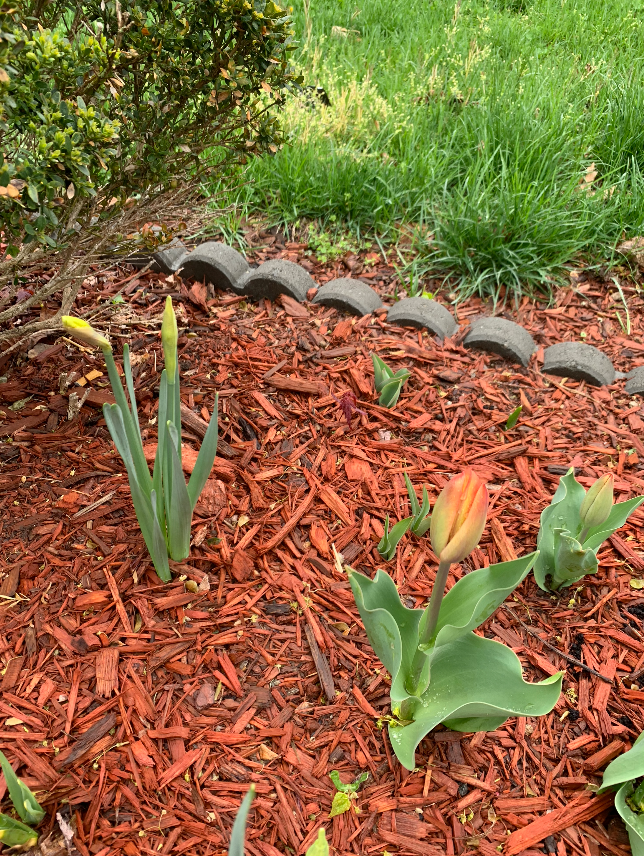How Colorful Spring Bulbs Magically Appear at the End of Winter
By / / No Comments / Gardening
All winter long I look forward to one single event: spring bulbs coming out of the snow! At the end of winter, it seems almost magical for pops of color to brighten up grey skies, but in reality it’s all very much planned out two seasons in advance. For gardeners in USDA Zone 7 and below, this seasonal dance isn’t just tradition—it’s rooted in the science of plant physiology and cellular biology. Although the bursts of pinks and yellows are magic enough after a long, dark winter, the science of how nature makes that happen is equally as remarkable!

At the heart of every bulb lies a botanical marvel—a specialized underground organ designed for nutrient storage and survival. These bulbs, whether tulips, daffodils, or crocuses, are nature’s reservoirs, hoarding the resources necessary for their annual performance.

So what happens after you throw a few tulip bulbs in the ground and cover them up with just a few inches of soil? As the weather cools down in autumn, signaling the approaching winter, these bulbs prepare for their seasonal slumber. A delicate balance of hormonal cues triggers dormancy—a state essential for survival into spring. At the forefront of this process is the hormone, Abscisic Acid (ABA), a master regulator of dormancy induction in plants. As daylight wanes and temperatures drop, ABA levels within the bulbs increase, triggering a cascade of events that culminate in dormancy. This hormonal surge serves as a safeguard, allowing bulbs to conserve limited resources and withstand the freezing temperatures of winter. ABA not only inhibits growth, but also promotes the synthesis of protective compounds such as sugars and antioxidants, fortifying the bulbs against freezing temperatures and the threat of drying out. These are just a few of the many ways the presence of ABA can effect the plant, which is why it’s such a key player in keeping bulbs regulated throughout the seasons. This dormancy phase is why you won’t see your bulbs grow in the fall season after initial planting. Putting new bulbs in the ground is just the beginning of their long journey to flowering.

And let’s be clear – dormancy isn’t merely a passive state—it’s an active process all happening underground! Many spring bulbs require exposure to a period of cold temperatures—a phenomenon known as vernalization. During this winter-time chilling period, molecular pathways within the bulb are activated, setting the stage for future growth and flowering. The longer and colder the temperatures are in the winter, the more molecular changes occur in the bulb; without these molecular changes due to the cold, the bulb may not even flower come spring time! This is why if you’re like me a hate the cold weather, we should at least recognize that it’s necessary to set up for a beautiful start to spring.
As winter progresses and nighttime temperatures dip below freezing, the soil becomes a battleground, subject to the forces of freeze and thaw. Shallowly planted bulbs are particularly vulnerable to frost heaving—a phenomenon where alternating cycles of freezing and thawing push them towards the surface. This is why fall planting provides a strategic advantage; it allows bulbs to establish deep root systems that anchor them securely in the soil, shielding them from the upheavals of winter.

Once you see little bits of green poking through a layer of snow, you may realize that spring is right around the corner. What you may not realize is in addition to temperature cues, bulbs possess a sophisticated sense of time, gauging the length of daylight to synchronize their growth with the changing seasons. Photoreceptors within the bulb’s cells detect subtle shifts in day length, providing cues for when it’s time to break dormancy and embark on the journey up and out of the soil towards spring.

So, why does all this science matter? Well, think of it like this: when you plant bulbs in the fall, you’re not just putting them in the ground and hoping for the best. You’re actually giving them a head start, helping them get ready for their big moment in the spring. As the days grow longer and the weather warms up in spring, all that preparation pays off. The bulbs burst forth with vibrant colors and sweet fragrances, improving the mood of anyone observing.
So, the next time you admire a bed of blooming tulips or daffodils, remember the science that made it all possible. It’s a testament to the incredible resilience and adaptability of these plants, and a reminder of the wonders that await us when we take the time to understand and appreciate the natural world around us.



